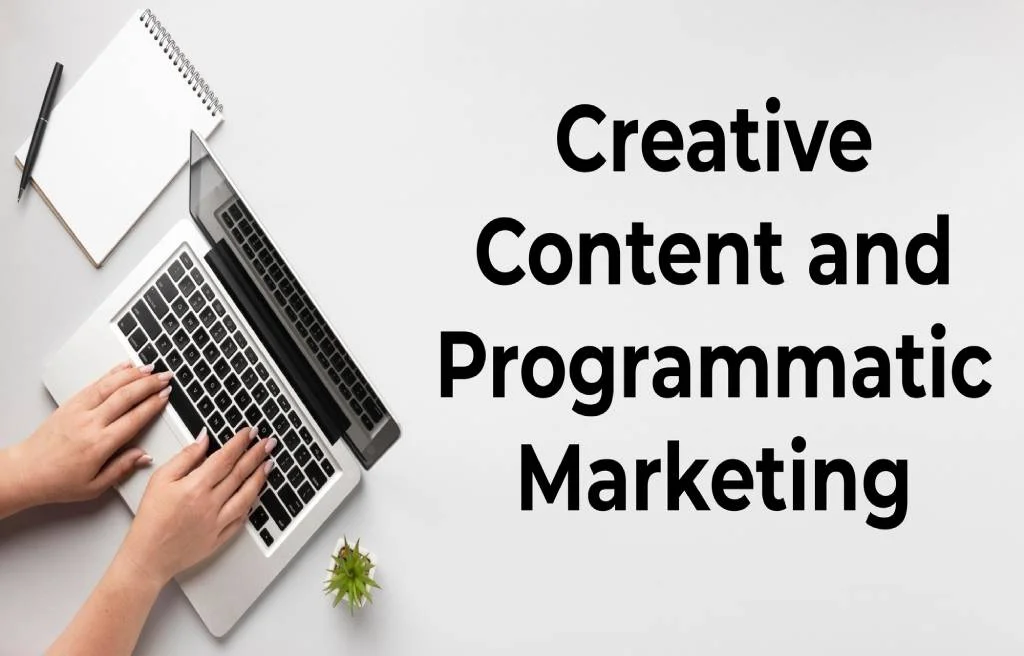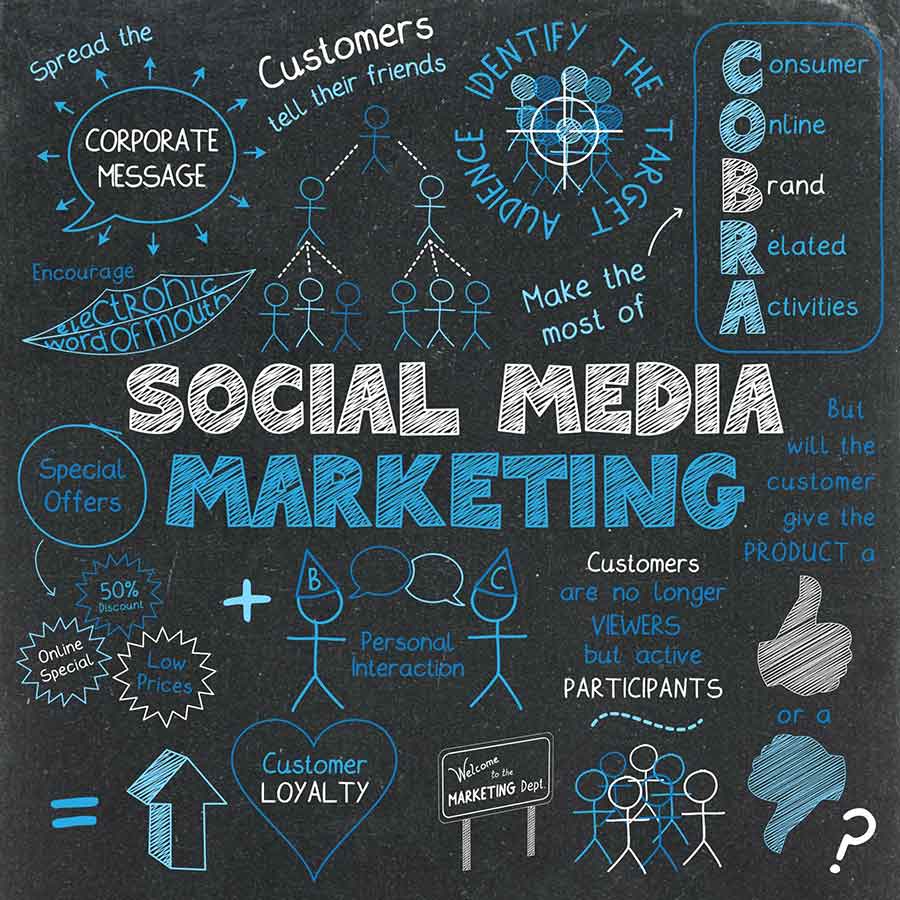Omnichannel Marketing: The Best B2B Marketing Strategy

You may think once you are using multiple channels to send your message across, you are using an omnichannel marketing strategy. What you may actually be doing is using a multi-channel or cross-channel marketing strategy.
Confused?
Well, you are not alone.
Many entrepreneurs and seasoned marketers still get confused about omnichannel marketing, what it is, and more importantly, how to implement it into their business-to-business (B2B) marketing strategies.
Don’t Confuse Omnichannel Marketing with Multichannel Marketing or Cross-Channel Marketing
Multichannel marketing involves distributing your brand message to different customers using multiple direct and indirect marketing channels.
In Cross-Channel Marketing, your target audience is reached through various marketing channels at different customer journey stages.
Omnichannel marketing is backed by data and analytics to create a comprehensive customer experience through all channels, both online and off. It can entail the use of digital channels as well as your brick-and-mortar store.
Omnichannel marketing also involves creating a brand presence across multiple channels, but unlike multichannel marketing and cross-channel marketing, the message, goals and targeting are the same. You can also make adjustments in campaign strategies and achieve the same goals across all channels.
This difference is why in an omnichannel marketing strategy, you can reap the benefits of a multichannel marketing campaign plus additional bonuses for B2B of increased sales across all platforms, devices and offline interactions.
Confusing omnichannel marketing with cross-channel or multichannel marketing can create disorder in your omnichannel marketing strategy. Simply using multiple channels won’t allow you to reap the full rewards of an effective omnichannel marketing strategy.
Ten differences can help you differentiate omnichannel marketing from multichannel marketing and cross-channel marketing.
| Omnichannel Marketing | Multichannel Marketing | Cross-Channel Marketing |
| A unified, consistent message across all channels | No consistency in messages across channels | Message only consistent on one channel |
| All channels are interactively connected | Multiple channels used individually | Some select channels are connected, but may not be fully interactive |
| Channels work together to provide a unified, flowing customer experience | Channels work in competition with one another to offer choices of different customer experiences | Selected channels work together for a specific customer experience |
| Comprehensive communication between all channels | No communication between channels | Communication is dependent upon channel needs |
| Messages and goals are customer focused | Messages and goals are company focused | Focus can be on both customer and company depending on campaign goals |
| Data flows and is accessed freely across all channels | Data flow and access is limited to one channel at a time | Data flow and access depends on the type of channel used |
| Cohesive customer experience | Confusing customer experience | Uniform customer experience |
| Clear transparency across all channels | No transparency between channels | Some transparency depending on the campaign |
| Automation drives the complete omnichannel marketing strategy | Automation is done on specific channels, but not cohesively | Automation is not a defining factor but may be implemented |
| Success is achieved when you improve customer experience and increase one-to-one engagement | Success is achieved when you increase reach | Success is achieved when you improve engagement |
Benefits of a B2B Omnichannel Marketing Plan
Though creating a seamless, effective B2B omnichannel marketing takes a little more planning, strategic effort and data, there are multiple advantages you can reap when it is implemented properly.
Better customer experience across all channels.
The pandemic has changed a lot in our lives. With the increase of e-commerce activity due to lockdowns, having an omnichannel marketing strategy for your business makes it easier for your customer to transition from your offline store to your digital e-store. For B2B customers, the digital switch meant more payment options, faster responses and fewer wait times.
Increase in engagement and sales across channels
Customers can reach you anywhere you are and through any medium, increasing the chances of engagement, lead generation and sales. In B2B, higher engagement has increased the potential for sales from new customers globally by 83%.
Better Consumer Data and Business Data
With pinpoint targeting, data enhancement, and personalization, you will get a clearer picture of consumer data through behavior monitoring across channels. Better and up-to-date business data gives you better insights into your customers’ buyers’ journey, helps you streamline your customer onboarding process while creating and improving your re-engagement strategy.
Components of Omnichannel Marketing in Your B2B Marketing Strategy
For your B2B marketing strategy to be defined as an omnichannel marketing strategy, it must have a few key components.
Clear Consistent Goals
Before you begin any B2B marketing strategy, you must have clear goals. Business goals, marketing goals and campaign goals are just the basics you need. In a B2B omnichannel marketing strategy, all goals must be aligned to create a consistent message and achieve specific campaign goals. For example, your social media message and goals must be the same as your geofencing mobile marketing campaign and your CTV programmatic display ads.
Communication Plan
You and your team need to have a clear communication strategy to maintain communication with your B2B contacts at every customer journey stage. Your communications team needs to be readily available when there are technical, distribution and sales issues to address. Your customers need to feel your brand presence across all channels and during the buyers’ journey. And when there is communication confusion within your team, your customers will think that as well.
Home Base
Your home base can be an app, e-Commerce store, website or your brick-and-mortar business. It should not be a social media page. The reason being is because the goal of creating a home base for your omnichannel efforts, is to drive consumer traffic back to a specific point where you can control the receipt of money, goods and data. You won’t be able to control and monitor traffic using a social media page.
Data and Analytics
You can use existing data you have collected, but you should use data validation techniques or get data enhancement services to verify and validate your B2B contacts list. You also have the option to buy business data or collect consumer data as you go along and build your B2B customer database. Either way, you will need consumer data or business data for a highly targeted omnichannel marketing strategy.
After using the data to segment your B2B contacts and craft targeted B2B direct mail campaigns or programmatic display ads, you’ll need to analyze your B2B digital marketing efforts. Try A/B testing as needed to redefine your B2B omnichannel marketing solutions. If you do not have your customer database, choose to buy business data or consumer data to get pinpoint targeting and a personalized experience for your B2B contacts.
Personalization
The availability of different mediums and data allows you to hone your B2B marketing strategy towards a specific buyer persona. Personalization goes beyond demographics, interest and lifestyle and involves behavior monitoring across all channels and buyers’ journeys to create a unique and consistent customer experience. Create a personalized digital experience that is just as customer-centric as your brick-and-mortar store by wowing them in the customer onboarding process and using pinpoint targeting to create unique client-specific buyers’ journeys.
Consistency
Consistency is the cornerstone of your omnichannel marketing efforts and differentiates it from multichannel marketing and cross-channel marketing. Consistency in campaign or brand goal, target audience and message creates the omnichannel customer experience. Without a consistent customer experience, your message may fall flat or not reach its intended target.
Channels that Work Best with Your Brand
You may use all your platforms or mediums, but are you using the right ones? Are they tailored towards your target audience and your overall brand goals? Many marketers and entrepreneurs assume that because you can use multiple channels, you can use any channel or medium to send your message. They also use as many mediums as they can without adapting the message to suit the campaign goal or even the specific platform. And of course, you also have to ensure that when you choose your medium, you have pinpoint targeting to maximize impact for optimal results.
Here are some suggested ways to use the varied channels like FrescoData to achieve maximum success when executing your B2B omnichannel marketing strategy:
- Programmatic display ads on CTV devices
- Geofencing mobile marketing for SMS campaigns
- Email re-engagement for existing customers
- Data-driven Search Engine Marketing (SEM) for creating highly targeted Google and Bing ads
- Interactive creative content for social media marketing strategy
- Buy business data or targeted email lists of the company’s key decision-makers.
- In-store event promotions
- Provide data enhancement services and data validation techniques to clean up your B2B contacts list for your B2B direct mail campaign
You can combine all of these channels for a massive sales campaign, or you can choose a few channels to maintain your brand presence. But remember, you don’t need all of these channels to reap the benefits of omnichannel marketing. In 2020, businesses using only three different channels saw a 287% increase in sales. Knowing what channel to use to suit your customer at whichever stage they are in the buyers’ journey is one of the many keys to achieving B2B omnichannel marketing success.
Perfect B2B Omnichannel Marketing Solutions
As 70% of customers expect a connected customer journey, creating cohesiveness in your omnichannel marketing strategy is the key to achieving success in your B2B marketing strategy. Combining your efforts across all mediums towards one base goal is the purpose of omnichannel marketing. To meet key marketing targets and get the best returns on your investment, not only must you have all the components of a proper omnichannel marketing plan, but also implement them thoroughly for optimal results.
Start by segmenting your target audience according to the different stages in the customer journey, consumer behavior and demographics. Then outline each segmented customer journey into maps that lead each targeted customer group back to the home base.
Identify communication opportunities and gaps in the customer journey and onboarding process and create a communication plan for your team and customers. This step will ensure all customer needs are met via any channel. Pay attention to channel conflicts and potential technical and distribution issues both onsite and offline.
Have a consistent, personalized and emphatic message, goal and brand presence across all devices with a platform-friendly call to action (CTA) that aligns with customers’ goals. Customers and businesses were forced to digitize in the past year so setting an emphatic tone of understanding with a simplified digital process helps make the digital transition easier.
Have multiple and secure payment gateways available so that when your customer is ready to purchase, there are a plethora of safe data-protected options available to them.
Be adaptable with your B2B omnichannel marketing solutions regarding channel use, methods and customer needs. Automate the entire process. Automate the marketing strategy, customer journey, onboarding process, sales process, distribution, returns and communication plan for a faster more accessible customer experience and manage your omnichannel marketing solutions. Automation also increases open rates by 50.89%, boosting reach and engagement.
Even with an effective B2B omnichannel marketing strategy, you will still need to test and analyze your actions across all channels continually. To do this, you’ll need a single dashboard to drive and measure all results. Depending on the results of your efforts, you will need re-targeting or readjustment of your B2B omnichannel marketing strategy. You may have to acquire data enhancement services or perform data validation techniques to ensure you have the right B2B contacts in your B2B customer database.
Many marketers have attempted to do it all by themselves or hire several different B2B marketing companies to create each piece of their B2B omnichannel marketing plan. Both options are time-consuming and drive up B2B marketing costs. An easier way to develop a cohesive omnichannel marketing plan is to contact FrescoData for our complete B2B omnichannel marketing solutions.
FrescoData can save you time and money when creating programmatic display ads for connected devices, geofencing mobile marketing campaigns for SMS and highly-targeted B2B direct mail campaigns for key company decision-makers. We can provide data validation techniques and data enhancement services for your B2B database, enabling you to use pinpoint targeting for your next B2B omnichannel marketing campaign.
The Importance of Successful Omnichannel Marketing in Today’s World
Today, marketing channels and channels marketing strategies are converging and blurring. Successful omnichannel marketing has the ability to provide a seamless customer journey across all channels and touchpoints.
Omni-channel marketing is not a new concept. It has been around for decades now. But today, with the convergence of digital transformation and IoT, it is imperative as well as a necessity for all businesses to adopt this strategy for them to stay ahead in the market competition.
Leading brands have been using this technique for years, and they’ve seen great results because it means that customers can interact with them on whichever channel they prefer.
5 Advantages Omnichannel Marketing Strategies Provide for Businesses
Today, marketing channels and channels marketing strategies are converging and blurring. Successful omnichannel marketing has the ability to provide a seamless customer journey across all channels and touchpoints.
Omni-channel marketing is not a new concept. It has been around for decades now. But today, with the convergence of digital transformation and IoT, it is imperative as well as a necessity for all businesses to adopt this strategy for them to stay ahead in the market competition.
Leading brands have been using this technique for years, and they’ve seen great results because it means that customers can interact with them on whichever channel they prefer.
Let’s strategize your B2B omnichannel marketing solutions today.





